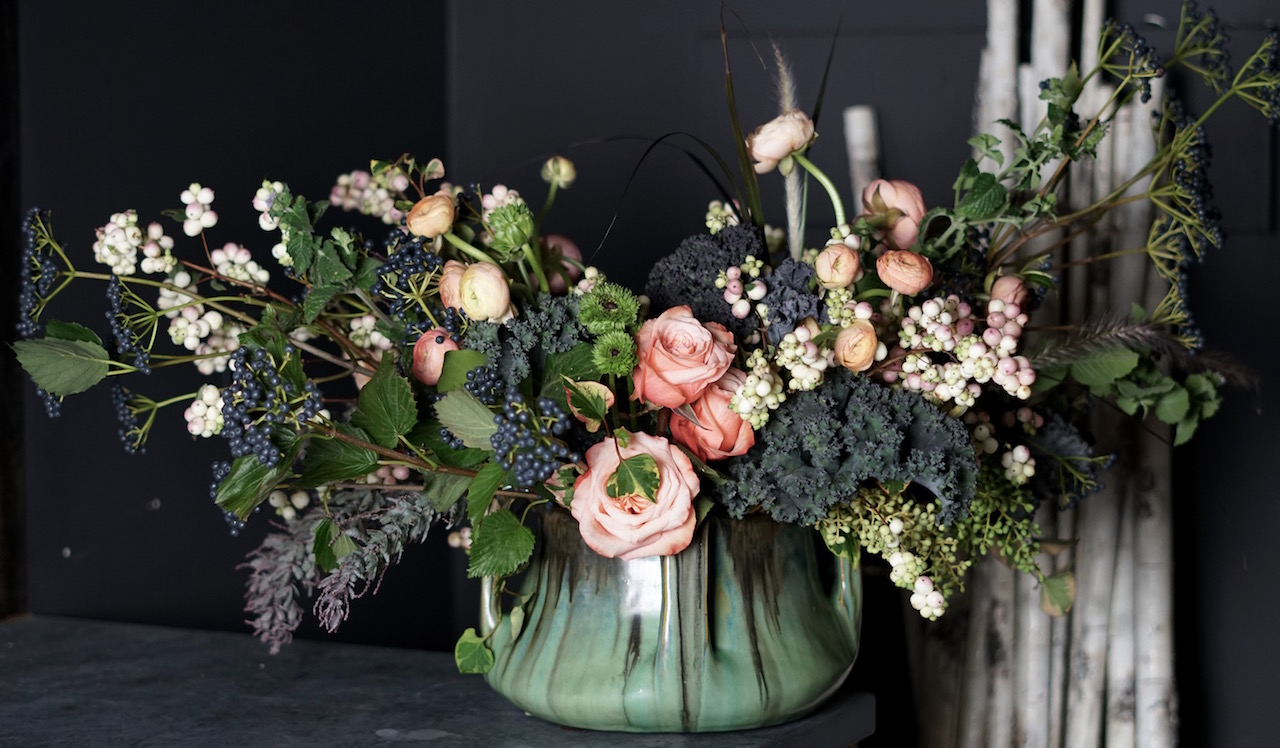I just want to say that this is my first-time blogging… I’ve contemplated writing in the past but one thing leading to the next I never put “pen to paper” until now. Yesterday morning, 3.20.17, upon the arrival of the vernal equinox, there was such an appropriate article, albeit over-due in my opinion, in T MAGAZINE (New York Times) that felt as if the author of ‘What Happened to Traditional Floral Bouquets’ (Deborah Needleman), had somehow jumped into my head overnight and wrote on my behalf… (and this on the heels of viewing images sunday morning of flowers at TEFAF 2017 that ended on 3.19 that also resonated profoundly) – synchronicity? or is it beyond time that this craft is revered once again by the populace and the artists are celebrated as musicians and chefs are… I am referring to the art of floral design (or should it be re-named botanical design).

Floral design has a very rich worldwide, cross-cultural history. The art of floral design goes back to ancient cultures revealed through excavated remains, tapestries, wood carvings, paintings and many other sources and so we have learned that flowers have been brought indoors for many reasons and for a very long time. Egyptian, Greek, Roman, Byzantine cultures all had their popular styles which evolved through the ages with some cultures opting not to design with the use of vessels but created wreaths and garlands (moldings and bas relief work). Just consider some of the European periods – middle ages for example when flowers both wild and cultivated were an important part of everyday life being utilized in food, drink and medicine not to mention their fragrances being appreciated strewn on the ground freshening the air.


During the 17th – 18th century the baroque and Dutch-Flemish styles emerged along with economic condition changes that allowed art to become accessible to not only the church or the nobility but to a previously ignored middle class. This period developed elaborate ornamentation characterized by a movement against the classic styles of straight lines, instead, embracing curves en masse and overflowing. The Dutch-Flemish (Netherlands and Flanders now Belgium) artists of this period, escaping and fleeing strife and religious persecution, creative expressions began to revolutionize floral art.


The oriental aesthetic in contrast to the European styles of floral design greatly influenced the development of the art form. I was mesmerized by the different schools of ikebana I first discovered when I was in my mid 20’s.
The philosophies of nature, the form, texture and diverse plant material opened my creative mind influencing my work and appreciation that no part of the plant was beneath consideration to be incorporated into my work. The emphasis on line and negative space was vital in the way my work has evolved over the decades and somehow i have returned right back to my roots (no pun J )…
To think a 6th century religious practice was so highly revered, a Rokkadudo Temple priest who founded ikenobo (the oldest school of ikebana meaning ‘living by the side of the lake’ and where as a matter of fact, the temple existed) was sought out by other priests for instruction. The art form was so highly respected and regarded that only the Imperial Family and its retainers enjoyed the beauty of this art form until patterns and styles evolved that by the late 15th century, floral displays were common enough that they were appreciated by the populace.

In my opinion, Ms. Needleman’s article is spot on, albeit a bit sexist (sisterhood, hive mind), in bringing forth not only this trend but her references to ingredients that many of us are seeking to incorporate into our compositions similarly to what a chef chooses to harvest for a recipe. In 1986, I picked up a copy of ‘Flowers Rediscovered’ by Maddelake and it spoke to me in volumes of what I had been doing since the beginning of my career with gardening practices and floral design. It was self-validating to see a Manhattan design group working with field and hothouse flora in a juxtaposed aesthetic adorning fancy ballrooms and modern city homes. UK’s Kenneth Turner was revolutionary in the way he harvested flora and spun out his work. Lewis Miller along with Ariella Chezar, Erin Benzakein, Sarah Ryhanen, Raymond Felton, Rafael Alvarado – contemporary designers/farmers who are rediscovering the art and pushing the envelope as to what constitutes a modern floral bouquet. I agree with ‘enough with the soulless compositions’ that defined “modern” in the late 90’s through the turn of the century and like the culinary world, we don’t want to run to get a can of beans from the cupboard to weave into a recipe”. Many larger florists must dumb things down to a hook for profitability purposes and those little hedge designs are necessary because of the logistics of having to transport them sometimes as victims to a reckless courier or delivery truck driver who hasn’t the skill to finesse them once they’ve toppled over.
I’ve coined this counter-culture design trend as the “new romantic” movement. The look, albeit not for all interiors and events, is nothing new. I have been creating designs of this genre with the help of foragers since the 80’s and 90’s when I had my first atelier, Renaissance. Another very exciting aspect to this movement is the farm connection – taping into what I suspect are new and heirloom varieties of flowers bearing fragrance, fluidity even with the occasional bug bitten leaf, but, hopefully at the same time, engineering ways to improve the flora’s vase life for the end user regardless of the negative references from Ms Needleman’s article regarding poor industry practices and product uniformity, sturdiness and the ephemeral nature of the cut flower, our clients, aside from event work, are looking for longevity no matter their social status.
